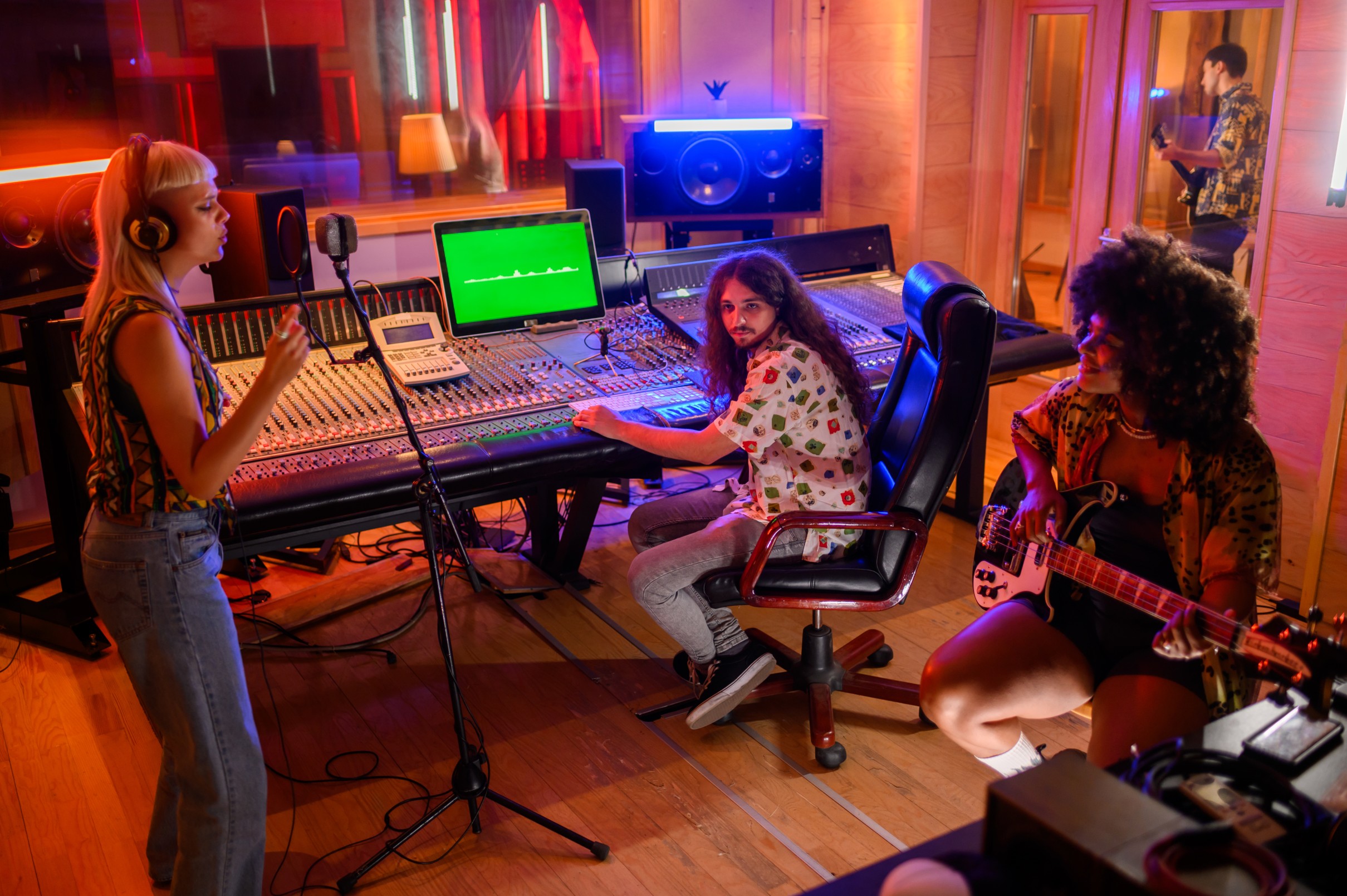The Evolution of Music Recording: Technology Transforming the Studio

Music recording is at the heart of the music industry—a space where creativity meets precision to produce sonic masterpieces. Traditionally confined to physical studios with extensive hardware setups, recording has evolved into a dynamic process, blending in-person and remote workflows powered by advanced technology.
Today, recording is no longer restricted by geography or budget. Artists can collaborate across continents, and small-scale producers have access to tools that rival the capabilities of the world's top studios. This blog explores the challenges of traditional recording, the transformative power of technology, and the trends reshaping the industry.
1. High Costs of Studio Infrastructure
Professional studios require significant investments in equipment, soundproofing, and maintenance. These costs can be prohibitive for independent artists and small labels.
2. Limited Accessibility for Remote Collaboration
Before the digital revolution, recording sessions required all collaborators—artists, producers, engineers—to be physically present, limiting creative possibilities.
3. Technical Complexity
Operating high-end recording equipment and software demands specialized expertise, creating a steep learning curve for newcomers.
4. Managing Large Audio Files
Recording high-quality tracks generates enormous file sizes, which can be challenging to store, share, and back up, particularly for remote teams.
5. Creative and Technical Bottlenecks
Balancing creative freedom with technical perfection often leads to delays. Producers must constantly tweak settings to align with the artist’s vision.
1. Cloud-Based DAWs (Digital Audio Workstations)
Platforms like Soundtrap and BandLab have democratized recording by providing cloud-based DAWs that allow musicians to record, edit, and produce tracks online. These tools enable real-time collaboration, making remote sessions seamless.
Real-Time Editing: Multiple users can edit the same track simultaneously.
Cross-Device Access: Projects are accessible from any device, allowing flexibility in how and where artists work.
2. AI-Powered Mastering and Mixing
Artificial intelligence has taken over labor-intensive tasks like mastering, offering professional-quality results without human intervention.
Landr and eMastered: Platforms that use AI to analyze tracks and apply mastering techniques, ensuring studio-grade output in minutes.
AI for Vocal Tuning: Tools like iZotope Nectar automate vocal corrections, saving time and improving accuracy.
3. Decentralized Recording Studios
The rise of portable recording equipment and SaaS tools has enabled decentralized recording setups, where artists can record from home while producers oversee remotely.
Portable Audio Interfaces: Devices like Focusrite Scarlett deliver studio-quality audio without the need for a full studio.
Remote Monitoring Tools: Platforms like Audiomovers let producers listen to high-quality live audio feeds from remote sessions.
4. Collaboration-First Platforms
Collaboration tools such as Splice and Avid Cloud Collaboration are redefining how artists work together.
Splice: Offers royalty-free samples, project-sharing capabilities, and community-driven collaboration tools.
Avid Cloud Collaboration: Integrated with Pro Tools, this feature allows multiple collaborators to work on the same session in real time.
5. Virtual Reality and Immersive Sound
VR and spatial audio technologies are making their way into recording studios, enabling new dimensions of creativity.
Spatial Audio Recording: Tools like Dolby Atmos allow producers to design immersive 3D soundscapes.
VR Studios: Some studios are experimenting with VR environments where artists can "step into" their tracks and manipulate elements in a virtual space.
1. Billie Eilish’s Bedroom Studio
Grammy-winning artist Billie Eilish recorded her debut album When We All Fall Asleep, Where Do We Go? in a modest home studio using minimal equipment, showcasing how accessibility to basic tools can produce global hits.
2. Remote Collaboration on "Old Town Road"
The viral hit Old Town Road by Lil Nas X was produced and shared across collaborators through platforms like Splice, highlighting the power of remote collaboration.
3. Hans Zimmer’s Decentralized Soundtracks
Renowned composer Hans Zimmer uses decentralized recording setups to collaborate with musicians worldwide, combining their work into cohesive scores for blockbuster films.
1. AI-Enhanced Creativity
AI tools will go beyond mastering and mixing, assisting with songwriting, arrangement, and even generating instrumentals tailored to an artist’s style.
2. Blockchain for Transparent Collaboration
Blockchain could streamline royalty management by automatically tracking contributions and ensuring fair compensation for all collaborators in a recording session.
3. Virtual Reality Studios
VR will redefine how artists experience their music during production. VR-based DAWs will allow creators to interact with sound visually, making the recording process more intuitive.
4. Decentralized Music Creation
The future of music recording lies in breaking down barriers between creators, with tools that enable real-time collaboration regardless of location, skill level, or budget.
5. Sustainability in Recording
As the industry focuses on reducing its environmental impact, studios will adopt energy-efficient equipment and embrace remote setups to reduce travel emissions.
Here are some of the standout SaaS tools transforming the recording process:
Soundtrap: A cloud-based DAW for remote music production and collaboration.
BandLab: Offers free online recording, editing, and community collaboration.
Landr: AI-powered mastering and distribution.
Splice: Provides royalty-free samples, project sharing, and collaboration tools.
Audiomovers: Enables remote monitoring of high-quality audio feeds.
Music recording has evolved from being a highly centralized, resource-intensive process to one that is accessible, flexible, and innovative. Thanks to advancements in cloud-based tools, AI, and decentralized setups, artists can focus on their creativity without being constrained by technical or logistical hurdles. As technology continues to advance, the future of recording promises to be even more collaborative, intuitive, and inclusive.
For artists, producers, and labels, embracing these innovations is no longer an option—it’s the key to staying ahead in an ever-evolving industry.

For modern telecom enterprises, delivering exceptional QoS is no longer optional—it’s a brand differentiator and a strategic lever for growth. Static provisioning models won’t cut it in a world of hyper-dynamic data usage.